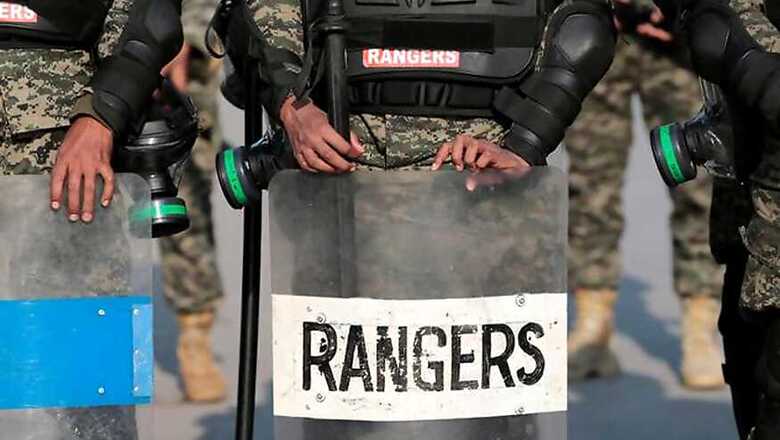
views
Islamabad: In the space of three weeks, a simple demonstration in Islamabad has turned into a national crisis for Pakistan.
At least six people died when police and security forces tried to clear protests on Saturday and the civilian government has called for the military to intervene to restore order.
Here are some questions and answers about the situation.
Who are the protesters?
On November 6, roughly 2,000 members of the Tehreek-i-Labaik Ya Rasool Allah Pakistan began a sit-in in Islamabad.
They are a little known hardline group led by a firebrand cleric named Khadim Hussain Rizvi who has been widely mocked for heaping abusive language on his opponents.
TLY comes from the Barelvi sect of Islam that has strong ties to Sufism, a mystical branch of the religion that is seen as moderate.
However the execution in 2016 of Barelvi follower Mumtaz Qadri — who assassinated liberal Punjab governor Salman Taseer over his stance on the country's blasphemy laws — appears to have galvanised this group to take a more hardline stance.
What do they want?
TLY launched their sit-in after the government amended the oath that election candidates must swear. The change was small, called a mistake, and quickly reversed.
But the demonstrators have linked it to blasphemy, a hugely sensitive charge that has often fuelled deadly violence in conservative Muslim Pakistan.
They are demanding the law minister, Zahid Hamid, resign over the amendment. As the protests spread on Saturday TLY clerics began calling for Pakistanis to come and defend the "honour of the Prophet".
According to their Facebook page, they seek shariah law in Pakistan and will run in more elections, having already participated in a by-election in Lahore in September.
How did the violence begin?
The sit-in became increasingly frustrating for commuters trapped for hours daily by the road blockade. As the judiciary blasted officials for their inertia, conspiracy theories swirled over who was supporting the small number of protesters.
On Saturday, nearly three weeks after the protests began, some 8,500 armed security personnel, including police and the paramilitary Rangers and Frontier Corps finally confronted the Islamists.
They were met with stubborn resistance, with police and protesters hurling rocks and demonstrators blocking more roads and setting vehicles alight, while calling for reinforcements.
The demonstrations also spread to Pakistan's two biggest cities, Karachi and Lahore, as well as smaller towns countrywide before security officials were ordered to suspend the operation and the government sought help from the army.
Why is the government doing nothing?
When the sit-in first began authorities had insisted on peacefully negotiating with the protesters, as politicians eye elections in 2018.
Pakistan's civilian government have long pulled their punches in such situations, fearing that a crackdown on the religious group would incite blowback — as it has in the past. Critics have warned this allows extremism to flourish.
Analyst Michael Kugelman of the Wilson Center in Washington said the success of the protest was "highly disturbing".
"It speaks to the clout and impunity enjoyed by religious hardliners in Pakistan," he said.
How will the army respond?
The military has not yet responded to the government's call and has offered no statements, fuelling speculation over why it is hesitating.
The generals may be hoping that the protestors will disperse themselves rather than face down the powerful military, Kugelman said.
"This is after all a military that commands a tremendous amount of respect from so many different walks of life in Pakistan, including religious hardliners," he added.
Any military intervention is fraught in Pakistan, which has seen multiple coups and been ruled by the generals for roughly half its 70-year history, though analysts do not believe the army is seeking power once more.


















Comments
0 comment